Change is a constant in the world of digital marketing. Just when you feel you have a handle on things, a new update comes along. Google Analytics, the tool many of us rely on to understand our website visitors, is no stranger to big shifts. With 2026 on the horizon, we can expect more evolution. But there is no need to worry. With a little preparation, you can navigate these changes smoothly and keep your business insights flowing.
At MoDuet, we help small business owners like you make sense of these updates. This guide will walk you through what to expect and provide simple, actionable steps to get your business ready. We will focus on practical advice, not complex jargon, so you can feel confident about your data.
Understanding the Shift: Why Google Keeps Changing Analytics
Before we dive into preparation, let’s understand why these changes happen. Google’s updates are typically driven by two major forces: user privacy and technological advancement.
First, privacy is a growing concern for consumers and lawmakers. People want more control over how their data is collected and used. Regulations are getting stricter, and browsers are phasing out third party cookies. Google must adapt its tools to work in this new, more private online world. This means moving away from tracking individual users across the web and toward more privacy safe measurement methods.
Second, the way people interact with businesses has changed. A customer’s journey is no longer linear. Someone might see your ad on social media, visit your website on their laptop, and later make a purchase through an app on their phone. Older analytics models struggled to connect these dots. Newer systems are designed to provide a more holistic view of the customer journey across different platforms.
Key Areas to Focus on for 2026
While Google hasn’t released a full roadmap for 2026, we can predict the direction based on current trends and past updates. Here are the key areas you should focus on to stay ahead.
1. Master Google Analytics 4 (GA4)
If you haven’t fully embraced Google Analytics 4, now is the time. GA4 is the foundation for the future of Google Analytics. It is fundamentally different from the old Universal Analytics. Instead of focusing on sessions and pageviews, GA4 uses an event based model.
What does this mean for you? An “event” can be anything a user does: a button click, a video view, a form submission, or a purchase. This model gives you a much more flexible and detailed picture of user behavior.
Actionable Steps:
- Complete Your GA4 Setup: Ensure GA4 is properly installed on your website. Don’t just add the tag; configure key events that matter to your business. For a local bakery, this might be a “menu download” event. For an ecommerce store, it would be “add to cart” and “purchase” events.
- Learn the GA4 Interface: Spend time exploring the GA4 dashboard. Get comfortable with the “Reports” and “Explore” sections. The Explore hub is powerful. You can build custom reports to answer specific questions like, “Which marketing channel brings my most valuable customers?”
- Set Up Conversions: Clearly define what a “conversion” is for your business in GA4. This tells Google what actions are most important. For a service business, a conversion might be a completed contact form. Mark this event as a conversion in your settings.
2. Embrace First Party Data
With the decline of third party cookies, your own data is more valuable than ever. First party data is information you collect directly from your audience with their consent. This includes email addresses from a newsletter signup, customer information from a purchase, or phone numbers from a contact form.
This data is reliable, relevant, and yours to keep. You can use it to understand your audience, personalize their experience, and build direct relationships.
Actionable Steps:
- Grow Your Email List: Make it easy and appealing for website visitors to subscribe to your newsletter. Offer something of value in return, like a discount, a free guide, or exclusive content. An online clothing boutique could offer “15% off your first order” for new subscribers.
- Use a CRM System: A Customer Relationship Management (CRM) system helps you organize your customer data. Even a simple, free CRM can provide huge benefits. It allows you to track interactions and better understand your customer base.
- Integrate Your Data: Look for ways to connect your first party data with your analytics. For example, you can import data from your CRM into tools like GA4 to get a richer view of the customer lifecycle.
3. Focus on Consent and Transparency
Building trust with your audience is crucial. Being open about how you collect and use data is a big part of that. A clear and honest privacy policy is no longer just a legal requirement; it’s a customer expectation.
Consent Management Platforms (CMPs) are tools that help you manage user consent for cookies and tracking. They display the cookie banners you see on many websites and record user preferences.
Actionable Steps:
- Review Your Privacy Policy: Make sure your privacy policy is up to date, easy to understand, and accurately reflects your data collection practices. Avoid legal jargon where possible.
- Implement a Consent Banner: If you don’t already have one, use a CMP to add a cookie consent banner to your site. This gives visitors control and helps you comply with privacy regulations.
- Use Google’s Consent Mode: Consent Mode adjusts how your Google tags behave based on your visitors’ consent choices. If a user declines analytics cookies, Google can still collect some anonymous, aggregated data to help fill in the gaps in your reporting. This is a privacy friendly way to recover some measurement insights.
4. Explore Predictive Metrics
One of the most exciting developments in GA4 is the use of machine learning. Google is using its vast data processing power to provide predictive insights, even with incomplete data.
For example, GA4 can predict which users are likely to make a purchase or which users are at risk of churning (stopping their use of your site or app). This allows you to be proactive with your marketing.
Actionable Steps:
- Check Your Eligibility: To use predictive metrics in GA4, you need to meet certain data thresholds over a specific period. You can check your eligibility within your GA4 property settings.
- Create Predictive Audiences: Once eligible, you can build audiences based on these predictions. For instance, you could create an audience of “likely 7 day purchasers” and target them with a special offer through Google Ads.
- Think Proactively: Use these insights to guide your strategy. If you see a high churn probability for a group of users, you might create a reengagement email campaign specifically for them. A subscription box company could offer a special gift to customers who are likely to cancel.
Putting It All Together: Your 2026 Analytics Checklist
Feeling overwhelmed? Don’t be. You can prepare for these changes with small, consistent steps. Here is a simple checklist to get you started.
- Audit Your Current Setup: Is Google Analytics 4 installed and collecting data correctly?
- Identify Key Business Actions: What are the 3 to 5 most important things a user can do on your website? Turn these into events in GA4.
- Start Building Your Email List: Add a clear signup form to your website.
- Update Your Privacy Policy: Review and simplify your privacy policy for clarity.
- Explore the GA4 Reports: Schedule 30 minutes each week to navigate your GA4 account and learn one new report.
The digital landscape will always evolve, but the fundamentals of good business remain the same: understand your customers and provide them with value. The upcoming changes to Google Analytics are designed to help you do that better, in a way that respects user privacy. By taking these practical steps now, you can ensure your small business is ready for a successful and data informed future.
We Want To Talk To You About Your Marketing Goals.
Let’s Supercharge Your Online Growth!












